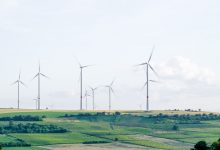A year ago, Germany set itself a target of securing 65 per cent of its electricity needs from renewable energy sources by 2030 – one of the more ambitious renewable energy targets anywhere in the world, but one that is still well short of the 100 per cent many experts believe is not only necessary, but possible in Germany.
Possible may be underselling it, however, if the last few weeks of electricity generation in Germany are anything to go by.
A week ago, RenewEconomy editor Giles Parkinson reported that Germany had sourced nearly 65 per cent of its electricity generation from renewables for the week finishing March 3 – “week 10”, according to the parlance of the Fraunhofer Institute for Solar Energy Systems (Fraunhofer ISE), from whom the data has been sourced.
Weeks 11 and 12 have seen Germany’s renewable electricity generation continue to increase, with week 11 (the week ending March 10) securing 67.6 per cent of its electricity from renewable energy sources while week 12 (the week ending March 17) increasing that percentage to 72.4 per cent.
 As the graph above shows, wind energy accounted for the largest share of German electricity generation last week with 56.9 per cent of the total. Biomass was the next largest renewable energy source, with 9.4 per cent, but nuclear accounted for the second-largest source of power last week, with 10.9 per cent of the total.
As the graph above shows, wind energy accounted for the largest share of German electricity generation last week with 56.9 per cent of the total. Biomass was the next largest renewable energy source, with 9.4 per cent, but nuclear accounted for the second-largest source of power last week, with 10.9 per cent of the total.
Thus, if you expand the definition of “clean electricity” to account for “zero-emissions” generation such as nuclear, the total share of Germany’s electricity delivered from clean energy sources increases to 83.3 per cent.
The fact that wind energy is so clearly accounting for such a large share of Germany’s electricity generation these past weeks is unsurprising, considering the blustery conditions sweeping the west of Europe recently – which included a “brief but fierce” tornado in the west of Germany, damaging around 30 houses, according to the Associated Press.
Forecasts are expecting windy conditions to continue sporadically over the next week, so it will be interesting to see a week from now how Germany’s electricity generation fares.
Of course, windy conditions are useless if you don’t have the infrastructure, and with nearly 30,000 wind turbines in operation across the country with a nameplate capacity of nearly 53GW, Germany is well placed to meet its renewable energy targets early – as long as political ambition matches the demands and ability of the market.
The greatest challenge for the next decade will be whether Germany can follow through on its goals of phasing out nuclear energy by 2022 and phasing out brown coal by 2038.
Having already met their 2020 renewable energy target of 35 per cent, Germany could simply power on towards 100 per cent by 2030 – at least, that is according to Craig Morris from Energy Transition, writing last year.








